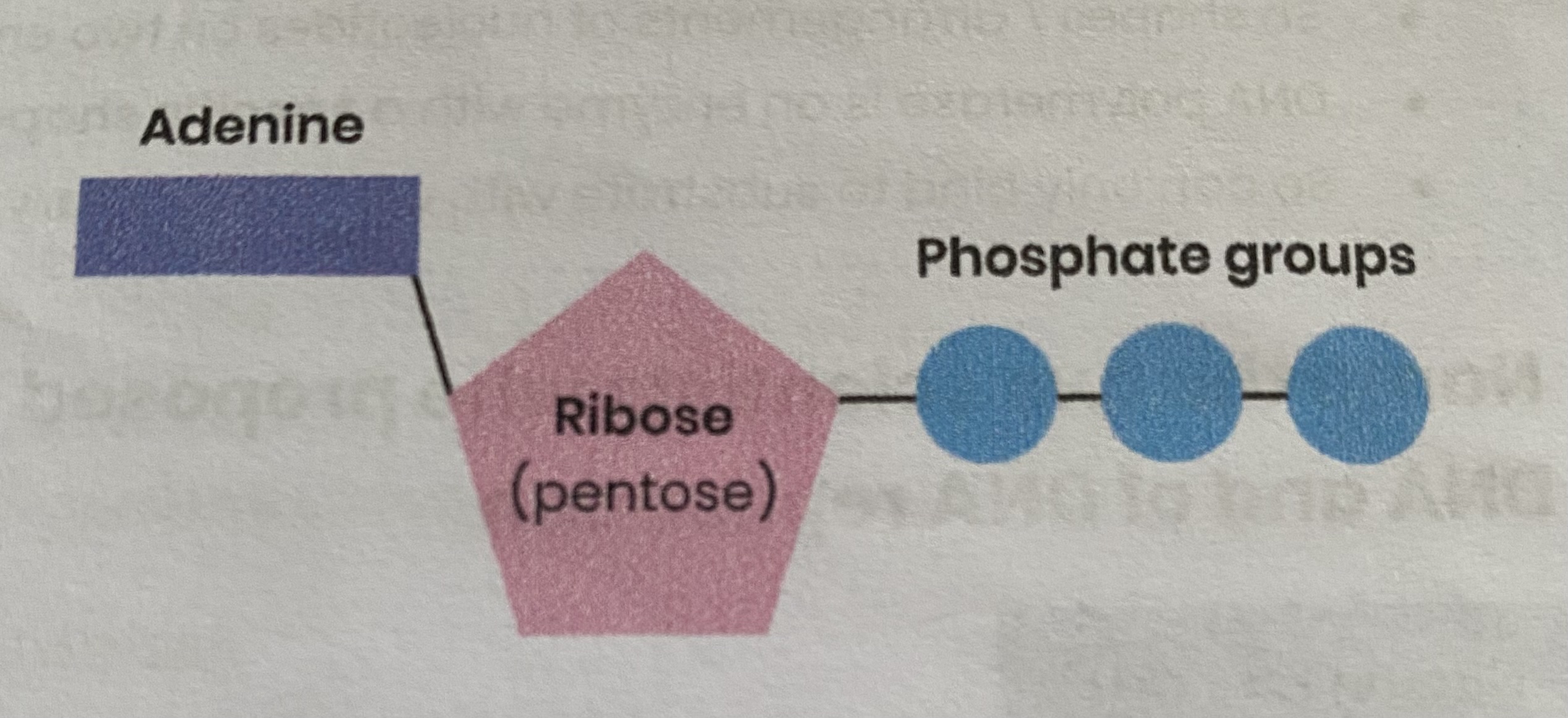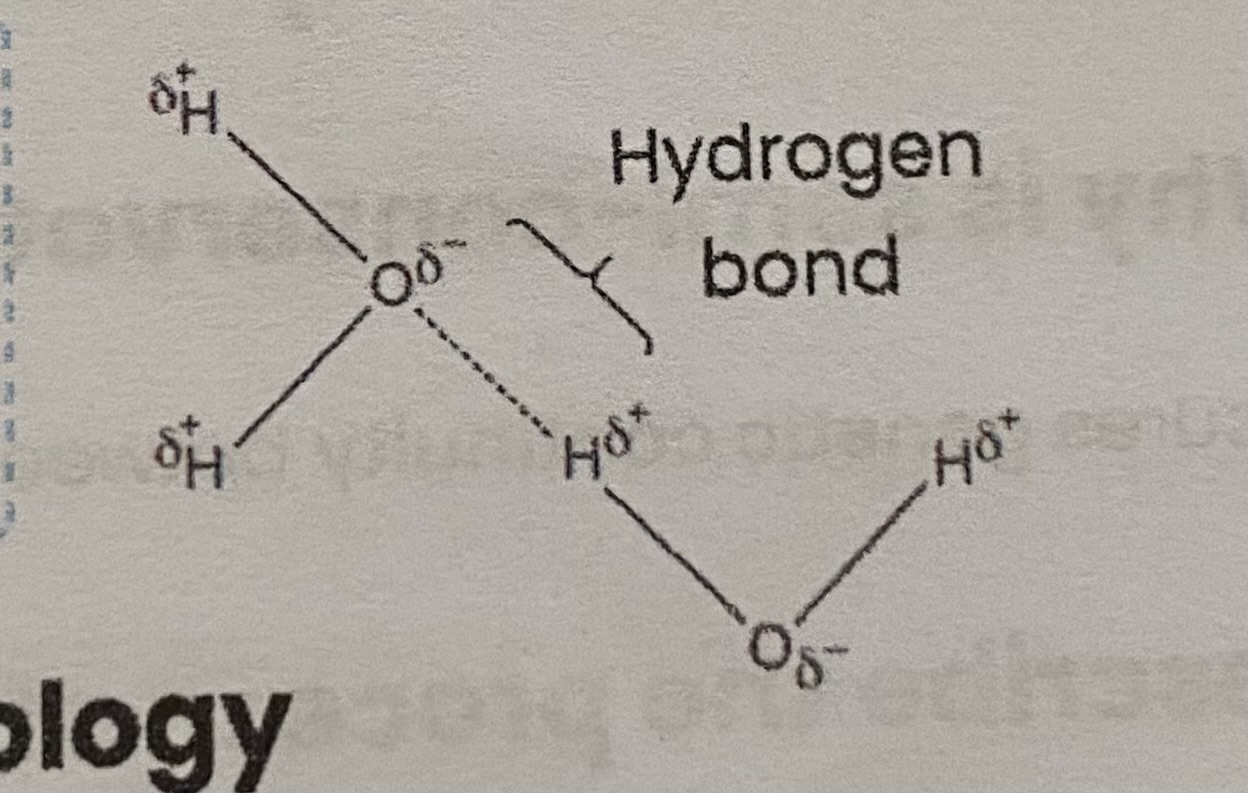1- ATP, Water, Inorganic ions
1/18
There's no tags or description
Looks like no tags are added yet.
Name | Mastery | Learn | Test | Matching | Spaced |
|---|
No study sessions yet.
19 Terms
What is ATP?
Adenine triphosphate
Describe the structure of ATP
Ribose bound to a molecule of adenine (base) and 3 phosphate groups
Nucleotide derivative (modified nucleotide)

Describe how ATP is broken down
ATP (+ water)—> ADP (adenosine diphosphate) + Pi (inorganic phosphate)
Hydrolysis reaction, using a water molecule
Catalysed by ATP hydrolase (enzyme)
Give 2 ways in which the hydrolysis of ATP is used in cells
Coupled to energy requiring reactions within cells (releases/ provides energy) - e.g. active transport, protein synthesis
Inorganic phosphate released can be used to phosphorylate (add phosphate to) other compounds, making them more reactive
Describe how ATP is resynthesised in cells
ADP + Pi—> ATP (+water)
Condensation reaction, removing a water molecule
Catalysed by ATP synthase (enzyme)
During respiration and photosynthesis

Suggest how the properties of ATP make it a suitable immediate source of energy for cells
releases energy in (relatively) small amounts/ little energy lost as heat
single reaction/ one bond hydrolysed to release energy (so immediate release)
cannot pass out of cell
What is water?
a major component of cells
Explain how hydrogen bonds occur between water molecules
water is a polar molecule
slightly negatively charged oxygen atoms attract slightly positively charged hydrogen atoms of other water molecules

What are the 5 properties of water?
metabolite
solvent (can dissolve solutes)
high specific heat capacity
large latent heat of vaporisation
strong cohesion and surface tension between water molecules
What is the importance of water being a metabolite?
used in condensation/ hydrolysis/ photosynthesis/ respiration
What is the importance of water being a solvent (can dissolve solutes)?
allows metabolic reactions to occur (faster in solution)
allows transport of substances e.g. nitrates in xylem, urea in blood
What is the importance of water having high specific heat capacity?
buffers changes in temperature
as can gain/ lose a lot of heat/ energy without changing temperature
good habitat for aquatic organisms as temperature more stable than land
helps organisms maintain a constant internal body temperature
What is the importance of water having large latent heat of vaporisation?
allows effective cooling via evaporation of a small volume (e.g. sweat)
so helps organisms maintain a constant internal body temperature
What is the importance of water having strong cohesion and surface tension between water molecules?
supports columns of water e.g. transpiration stream through xylem in plants
produces surface tension, supporting small organisms (to walk on water)
Where are inorganic ions found in the body?
in solution in cytoplasm and body fluid, some in high concentrations and others in very low concentrations
Describe the role of hydrogen ions
maintain pH levels in the body—> high conc= acidic/ low pH
affects enzyme rate of reaction as can cause enzymes to denature
Describe the role of iron ions
component of haem group of haemoglobin
allowing oxygen to bind/ associate for transport of oxyhaemoglobin
Describe the role of sodium ions
involved in co-transport of glucose/ amino acids into cells
involved in action potentials in neurons
affects water potential of cells/ osmosis
Describe the role of phosphate ions
component of nucleotides. allowing phosphodiester bonds to form in DNA/ RNA
component of ATP, allowing energy release
phosphorylates other compounds making them more reactive
hydrophilic part of phospholipids, allowing a bilayer to form